-
![img]()
How to Make Sweet Potato Balls That Are Crispy Yet Soft on The Inside
Merryn Tan
December 17, 2021
1 min
The crispy on the outside yet soft on the inside, deep-fried sweet potato dough ball is a delicious snack loved by Malaysians.
Commonly sold by street vendors, these irresistible sweet potato balls are in fact easy to make at home using minimal ingredients such as sweet potato, flour, salt, sugar and baking powder.
Benefits of Sweet Potatoes
Did you know sweet potatoes provide a number of health benefits? They are a great source of fibre, vitamins, and minerals.
Orange and purple sweet potatoes are rich in antioxidants. These antioxidants protect our bodies from free radicals.
Sweet potatoes also contain soluble and insoluble fibres that benefit our gut health. A healthy gut is an important part of a healthy immune system. With all these benefits, sweet potatoes easily make an exceptional option for carbs.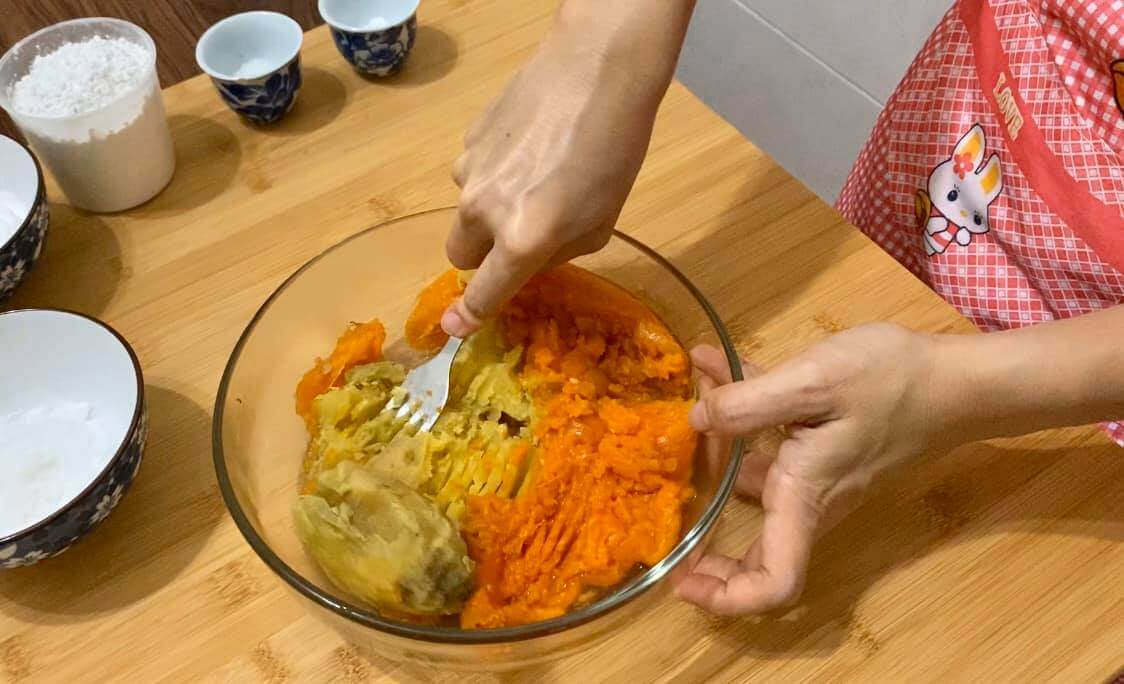
Making sweet dough balls are actually very easy. First, steam the sweet potatoes until the inside is cooked through. Then add flour, salt, sugar and baking powder. Knead into a soft dough.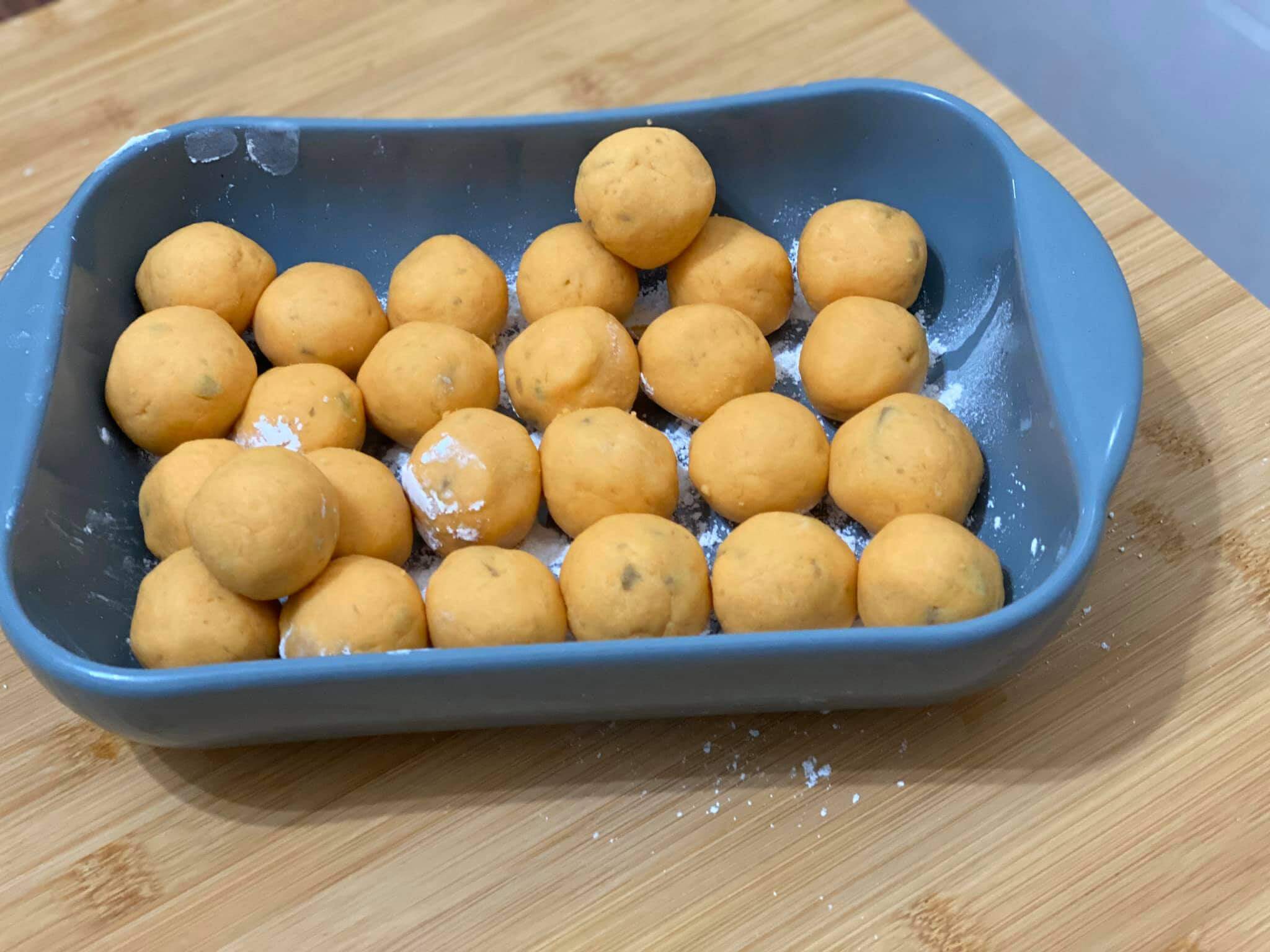
Shape dough into small balls and fry them until golden. Sounds simple enough for you to try? Then let's check out this recipe:
Sweet Potato Balls Recipe
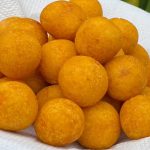
- 450 g sweet potatoes (peeled and steamed)
- 1 cup rice flour
- 1/4 cup glutinous rice flour
- 4 tbsp sugar
- 1 tsp salt
- 1 tsp baking powder
Prepare steamer. Add sweet potatoes and steam until tender, about 15 minutes. Remove from steamer and mash.

Add baking powder into rice flour.
Pour rice flour into mashed sweet potatoes.

Add glutinous rice flour.
Mix in sugar and salt.
Knead into soft dough.

Roll into balls.

Heat oil in a wok.
Carefully roll the balls into the wok.
Keep stirring until the balls turn golden.

Remove from oil.
Serve.

For more insightful stories and fun recipes, stay tuned to Motherhood Story! -
![img]()
How To Register for the Walk-In COVID-19 Booster Programme
Amira Jeffrey
November 19, 2021
1 min
A press release was shared early today pertaining to the walk-in registration for the COVID-19 booster shots programme.
It was released by ProtectHealth Corporation via Twitter. ProtectHealth is a wholly-owned subsidiary of ProtectHealth Malaysia, established under the Ministry of Health Malaysia (MOH).
According to the press release, here is some key information the public must be aware of prior to the registration.The Registration of Individuals
Apart from walking in to register, it's now confirmed that it can also be made via phone call and also e-mail.
The general public can refer to a complete list of private health facility PPVs on the ProtectHealth website effective this 22nd November 2021. The list will be periodically updated.
Individuals are also advised to register at only one PPV of a private health facility to avoid instances of double booking. Those successfully registered will be placed on a waitlist and will be contacted by the PPV in the advent of any cancellation.
The same applies to those receiving their appointments via MySejahtera. Those already receiving their appointment confirmation from MySejahtera, do ensure to:- proceed to the designated PPV as stated
- not put yourself on any waitlist
Registration for the waitlist at PPVs of private health facilities under ProtectHealth is also free. Additionally, only Corminaty vaccine (Pfizer-BioNTech) is provided at the list PPVs as of now.Eligibility of Individuals
All three registration platforms—walk-ins, telephone, and e-mail apply to those yet to receive their appointments, who are:- Frontliners
- Adults aged 40 years and above
- Adults aged 18 years and above with no comorbidities
- Long term care facilities individuals (staff and residents)
- Pregnant mothers
- Those traveling abroad
Furthermore, those who have yet to receive or missed their first and/or second doses of COVID-19 vaccination are also eligible. This includes adolescents aged between 12 to 17 years old.
The Health Ministry alongside ProtectHealth believes this approach encourages those eligible for the doses to proceed with their vaccination immediately without having to wait.
It also ensures optimal usage of the vaccine with no wastages.Protect Yourself and others via Vaccination
The government and ProtectHealth urge all of those already receiving their appointments to obtain their vaccine immediately.
ProtectHealth, through private medical professionals and healthcare NGOs, will continue to collaborate with the Ministry of Health to further maximise the National COVID-19 Immunisation Programme.
The fight against the COVID-19 pandemic may have transitioned into an endemic phase but that does not mean the virus has subsided.
For the Malaysian community to fully coexist with the virus, every citizen must play their part in the vaccination programme alongside adhering to other COVID-19 measures stringently.
Together, we can surely overcome this.
For more insightful reads, updates, and fun recipes, stay tuned to Motherhood Story! -
![img]()
How to Maintain an Active Lifestyle as a Busy Parent
Zakwan Shah
November 15, 2023
4 min
Finding time to exercise as a busy parent can be an ordeal.
Your day job takes up most of your time, and what few hours you have left of the day is spent on the couch.
Exercise is important for maintaining a healthy body mass index as well as preventing cardiovascular diseases.
Working out on the regular can help boost your mood, help you sleep better, fight off stress and even increase your libido.
You may think it’s impossible to squeeze in some exercise as a working parent; it’s not. Here are a few tricks that can help you stay fit.How to Maintain an Active Lifestyle as a Busy Parent
Plan and Schedule

Young kids often have a set routine laid out for them.
Breakfast, school, pick-up, homework, dinner, and bedtime, etc. It’s important to fit your activities around their schedule.
Of course, exercising becomes easier if you send your kids to daycare and you’re a stay-at-home spouse. You have the entire day to yourself, that is, after you’re done with chores and errands.
However, if you are a working parent, it may be a little difficult to squeeze in a workout between your regular 9 to 5. The most important thing you need to decide on is time and place.
Whether you prefer your own home or the gym, in the morning or evening. But once you work out the kinks, it should be smooth sailing from then on.
One more tip I have is to make full use of your weekends. An average adult typically needs to exercise four to five days a week.
So skip two days off your work week and dedicate your Saturdays and Sundays fully to your exercises.Wake Up a Little Earlier

Early morning exercises are usually the best. You’re not exhausted from work and there’s plenty of time before you have to get ready for the day.
Morning exercises are great for fat loss, especially if executed on an empty stomach.
Getting moderate to high intensity workouts early in the day can boost your mood and mental functions, allowing you to function better at work.
Exercising outdoors offers the added benefit of helping regulate your sleep and wake cycle.
The serotonin you produce when exposed to the sun is converted to melatonin at bedtime.
Melatonin helps you get good, productive sleep throughout the night; helping you function better the next day.Make Time

Even in corporate jobs, you don’t spent all 8 hours of your day in front of a desk. Most employees take multiple breaks throughout the day.
So this is your opportunity to not only stretch your legs, but get some much-needed exercise in.
Depending on the size of your office, you can take laps around the building, walk up and down the stairs and even squats.
Of course, it’s important not to do a full-blown workout routine. You don’t want to return to your desk all sweaty and gross.Enlist Your Spouse

Many parents are in charge of fetching their kids after work.
This may throw a wrench in your workout plans if you plan to exercise straight after work.
If this is the case, get your spouse to take over pick-up duties.
If your spouse has their own exercise routine, perhaps you can take turns picking up the kids. This frees up a lot of time for you to get home or to the gym before nightfall.Exercise as a Family

If you want your kids to adopt your healthy lifestyle or if you’re just bored working out alone, get your kids to join.
A football game can burn as many calories as a full workout session at the gym. Alternatively, you can mix exercise with chores.
You can get your kids to do some spring-cleaning or yard work.
Exercising with your spouse and kids will not only help you stay fit and healthy, but will also bring you closer together as a family.Try an Energy Drink
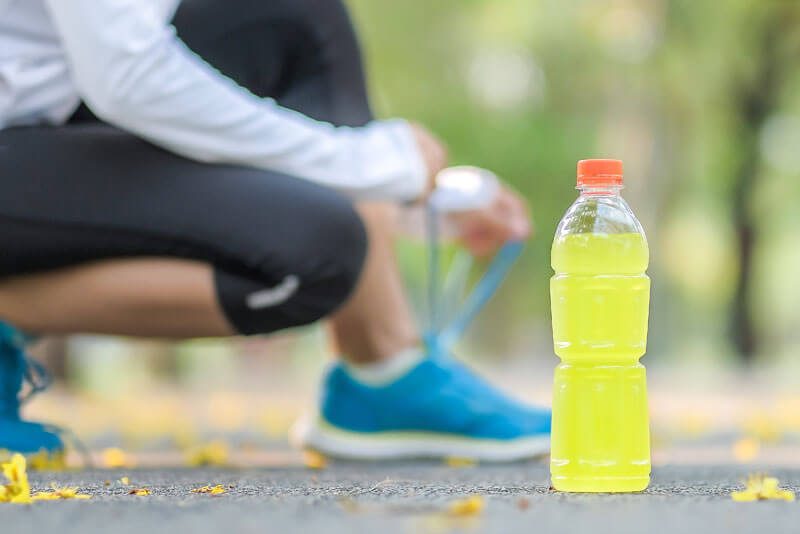
It’s usually not the lack of time that parents have trouble with when it comes to exercising but energy.
You may be so mentally exhausted with work that exercising seems like just another chore to finish. An energy drink may help with that.
Of course, energy drinks are a double-edged sword. Some are often laced with inordinate amounts of caffeine, sugar, and supplements.
So for the best options, choose energy drinks with artificial or botanical sweeteners like stevia and monk fruit extract.
These offer you a quick dose of vitality minus the calories.Invest in a Home Gym
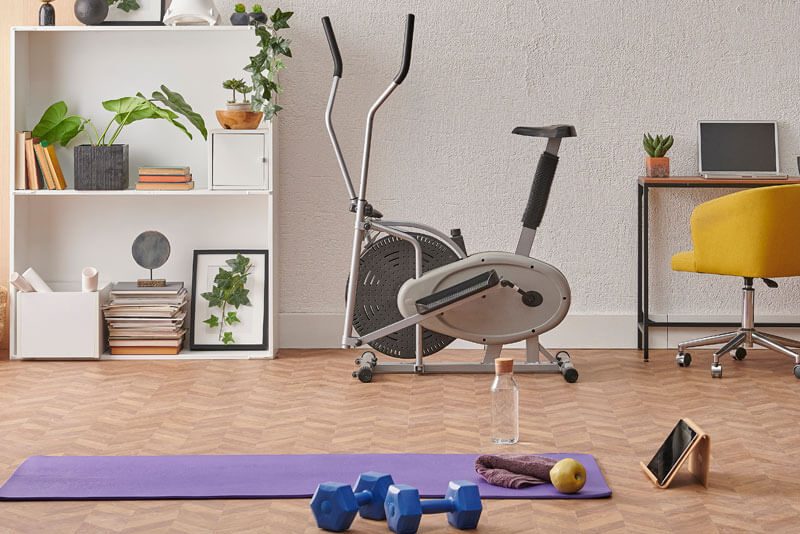
Home gyms may sound expensive and wasteful, but then again, so are gym memberships.
If you can afford it, I definitely suggest setting up a home gym.
Even if it’s just a couple pf free weights and an exercise bicycle. You’ll eventually accumulate more equipment throughout the years.
Besides, you can have them all to yourself instead of sharing them with dozens of other people. Moreover, gym equipment are built to last.
You only buy one set of each, and you get to use them throughout your entire life.An Active Lifestyle is Not Impossible
Being a parent does not mean you have to sacrifice your health and wellbeing. If anything, you should be working twice as hard to maintain a healthy lifestyle.
You have a spouse and children to take care of, and you can’t do that if you’re not in the best physical condition.
The most important part about making time to exercise is to have a workout plan.
Whether you prefer jogging, aerobics, callisthenics or weight training, make sure you get at least half and hour each day.
That’s it. Exercise doesn’t have to be a backbreaking activity. The most important part about having a sustainable exercise routine is to not make it too hard.
As long as you’re getting some physical activity each week and maintaining a healthy diet, you’re well on your way to leading a long and happy life.
Disclaimer: The information provided in this article is for informational purposes only and should not be considered as medical advice from Motherhood. For any health-related concerns, it is advisable to consult with a qualified healthcare professional or medical practitioner.
For more insightful stories and fun recipes, stay tuned to Motherhood Story!
-
![img]()
Postpartum Diet: Breast Milk Boosters
Natasha
December 24, 2021
6 min
We last covered on which medicinal herbs are safe for your postpartum body and which should be avoided. Today, we are going to explore breast milk boosters!How do I boost my breast milk?
Nursing mummies might wonder how to boost their breast milk supplies so their babies can reap more of its nutrients. This concern and your postpartum recovery might burden you. Fret not, however, as we have gathered all the necessary information for you!
Let’s discover how you can boost your milk supply together, shall we?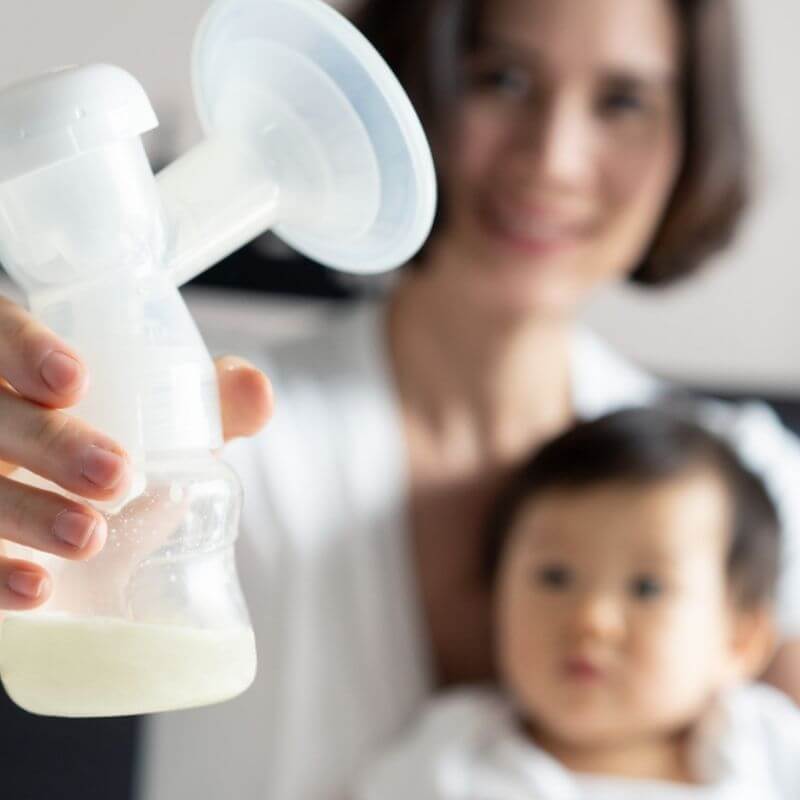
24 Natural Breast Milk Boosters
Almond
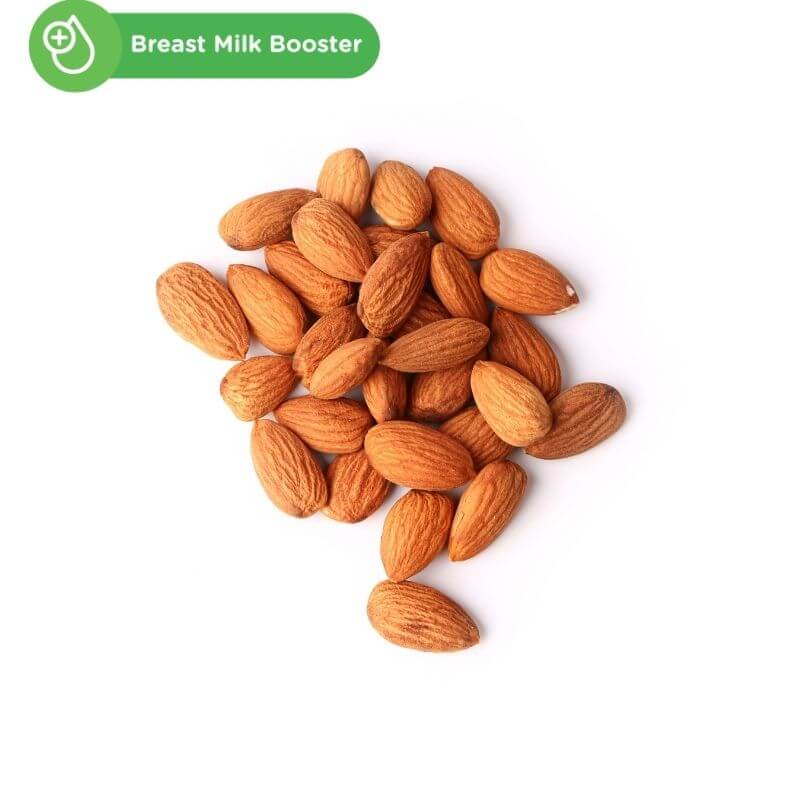
There are many beneficial nutrients in almonds, like omega-3 fatty acids and vitamin E. They can help to boost your breast milk production. Almonds can also help to improve your baby’s brain development and prevent them from heart disease. You can eat almonds as snacks between meals!Apricot
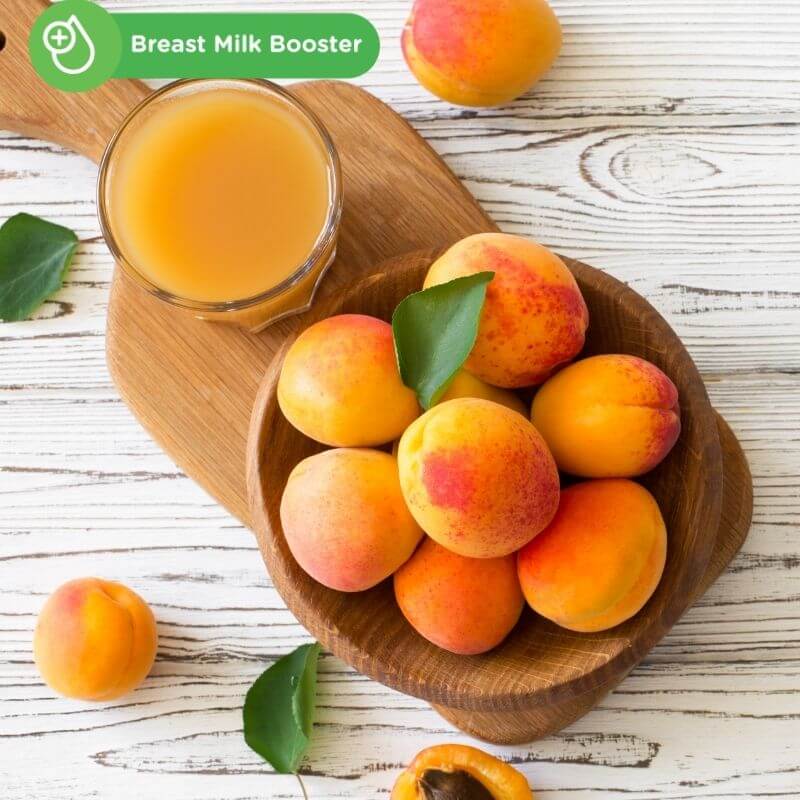
Nursing mummies can eat apricots! This fruit can act as a milk booster and stimulate good bowel movement. Apricots can also help to balance your hormones. It is high in fibre and calcium which are great for you. Just remember to consume fresh apricots rather than dried ones. This is as the dried apricots have sulfur dioxide which is dangerous for your health.Barley
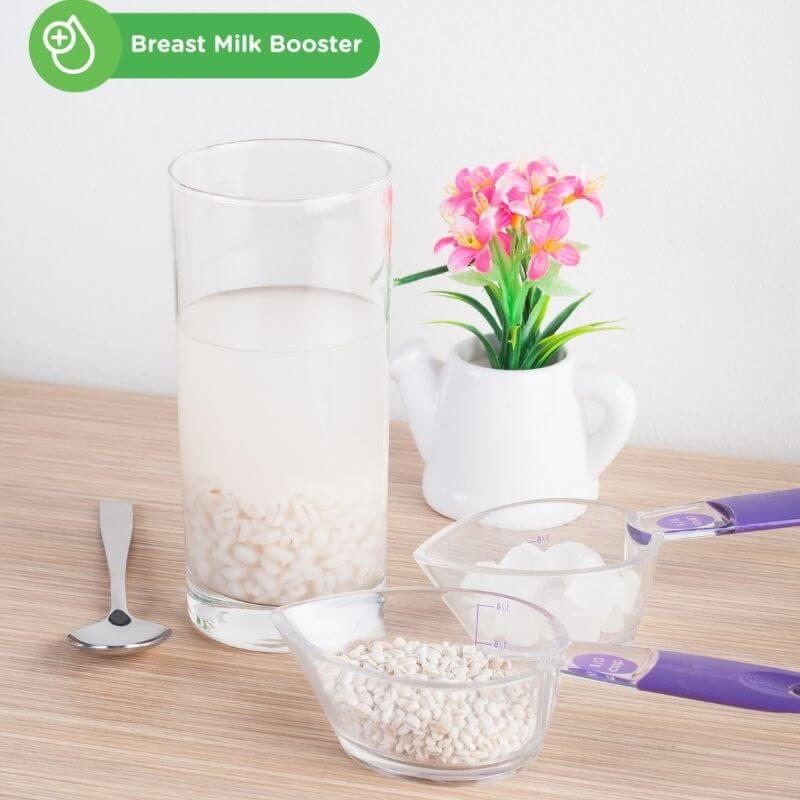
Barleys are safe for breastfeeding . They can increase your milk supply and keep you hydrated. You can have them with your drink, soup or salad.Bitter gourd
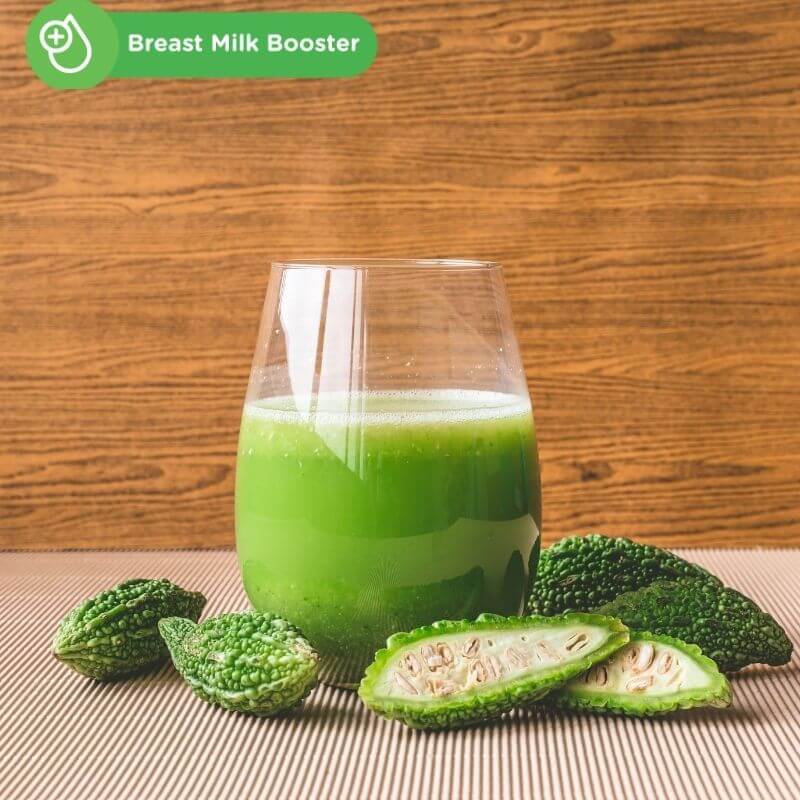
Breastfeeding mummies can consume bitter gourds too. They are rich in nutrients that are great for you. They also contain high water content which keeps you hydrated. They are easy to digest and help to enhance lactation. Additionally, bitter gourds are low in calories. This means they can help you to lose weight too!Brown rice
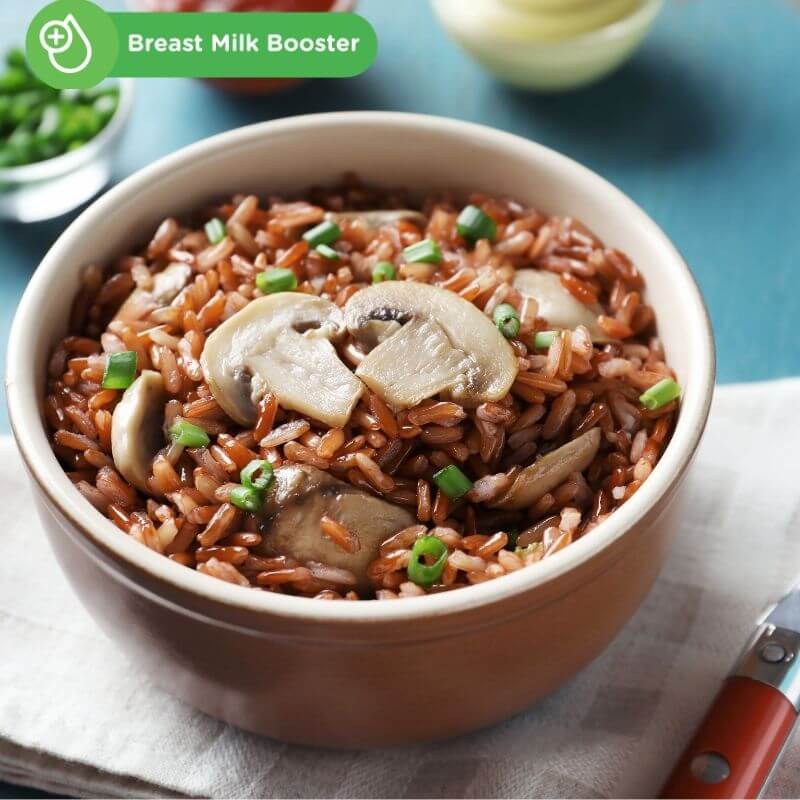
You can eat brown rice to promote your breast milk supply. This rice can also enhance your energy levels.Carrot
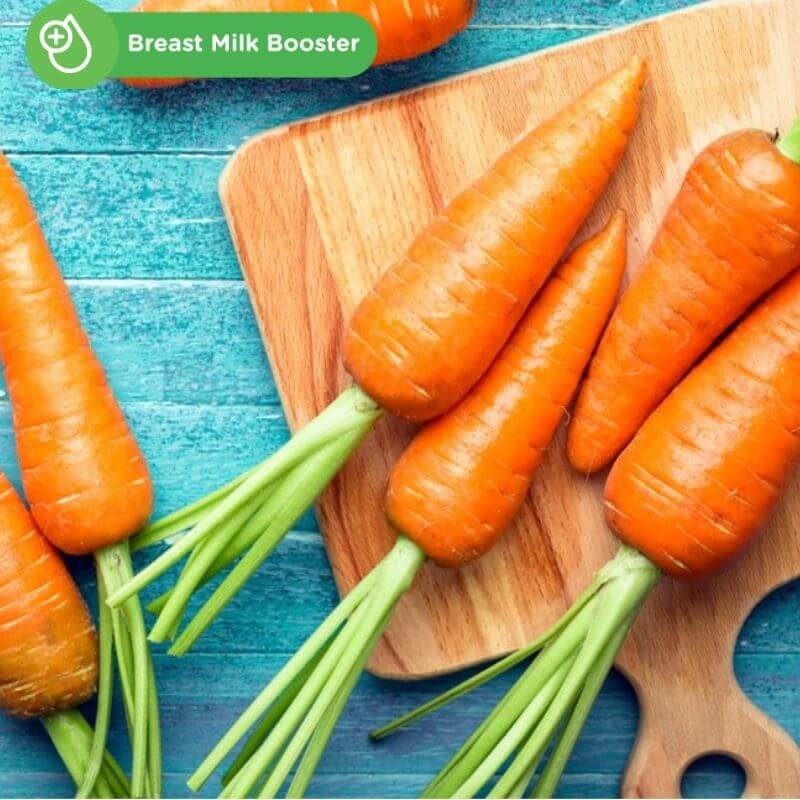
You can eat carrots to enhance your lactation. They are high in vitamin A which helps to improve your eye health. Carrots are also good to prevent cancer. You can try eating them in your salad or juice.Chickpea

Chickpea is a great milk booster for nursing mums. This is because chickpea contains calcium and vitamin B which help to stimulate lactation. Chickpea is a great snack for the confinement period as it can provide you with numerous nutrients like fibre and protein. Chickpea also has natural carbs which can help to replenish your energy.Fenugreek

Mums can consume fenugreek without any worries while breastfeeding. Fenugreek can help to boost your milk supply. They are high in nutrients like calcium, iron, vitamin B, and beta-carotene. All of these are great for your overall health. Fenugreek seeds are commonly used in savoury dishes. You can try eating them with puri or roti.Garlic
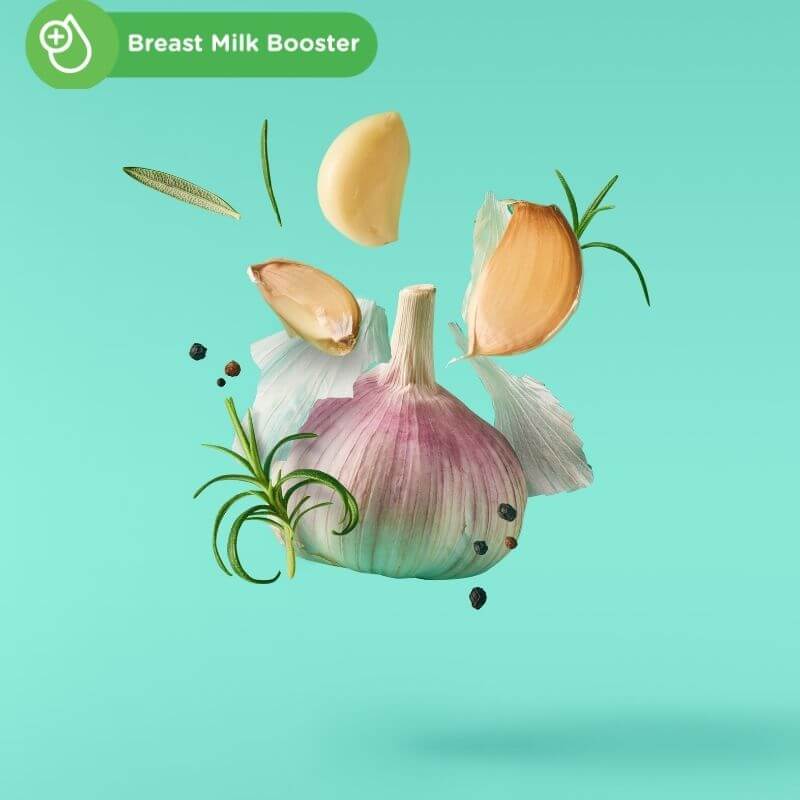
Nursing mummies can eat garlic too! Generally, garlic protects you from heart disease and boosts your immunity. Garlic can help to enhance your breast milk production. But, they might also affect the taste of your breast milk. So you need to eat them in moderation.Green leafy vegetables
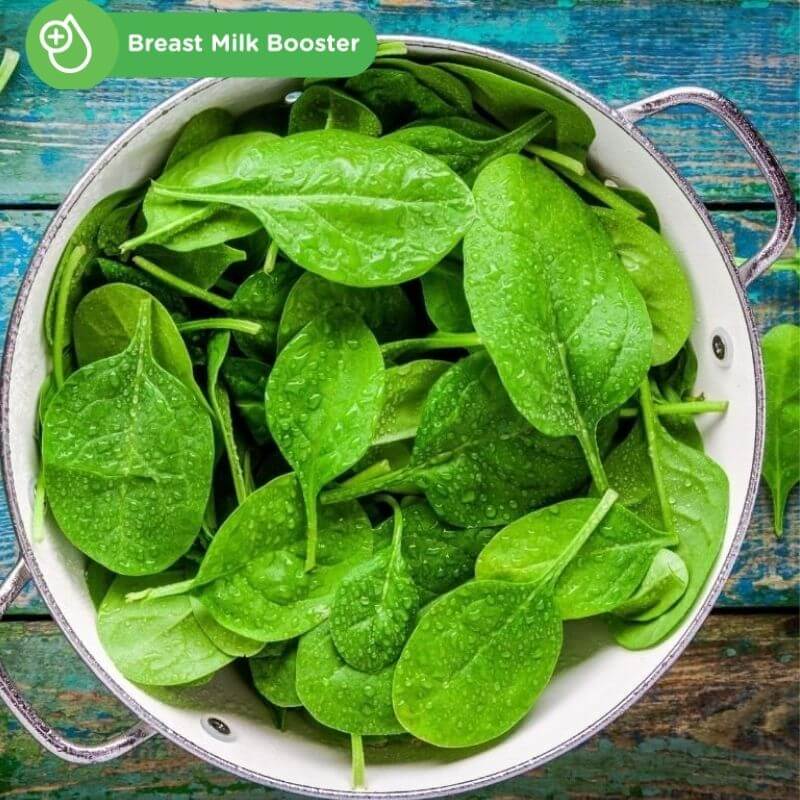
You should eat a lot of vegetables when you are breastfeeding your newborn. They are healthy and rich in many nutrients. Like calcium, fiber, minerals, folate, and iron. You can try eating green leafy vegetables like kale, mustard greens, kale, and spinach. These leafy greens can help you to enhance your milk production. You should try eating at least one portion of leafy greens in your confinement diet.Lentils
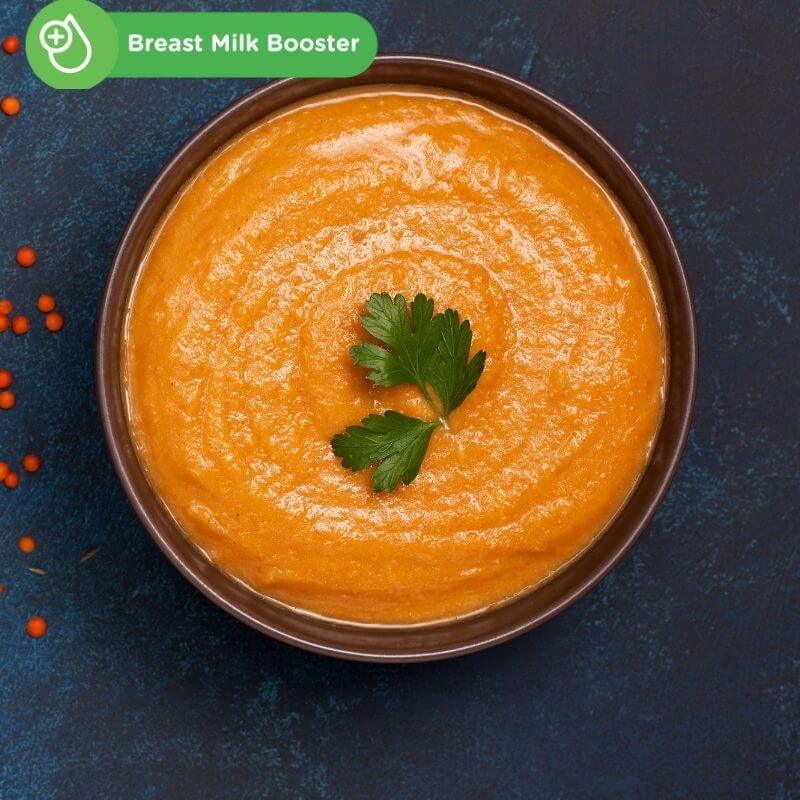
Lentils are a great milk booster. They are rich in protein, vitamins, dietary fibre, and protein. All of these are good for your health. However, do consume them in moderation as they might cause excessive gas to your newborn.Milk
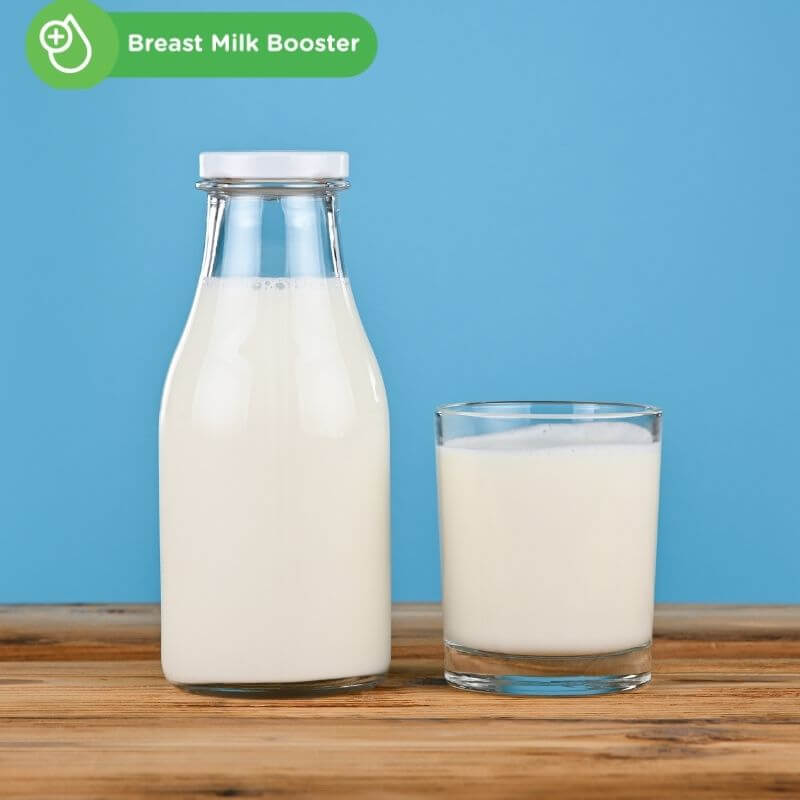
Milk is a superfood for nursing mums. They are rich in calcium, healthy fats, and folic acids. All of these can help boost your milk supply and ensure the milk is nutritious for your newborn.Green tea

Green tea can boost the production of breast milk. It has minerals and antioxidants which helps your body to relax and purify your system. Additionally, green tea can also promote blood circulation and control your cholesterol levels.Asparagus
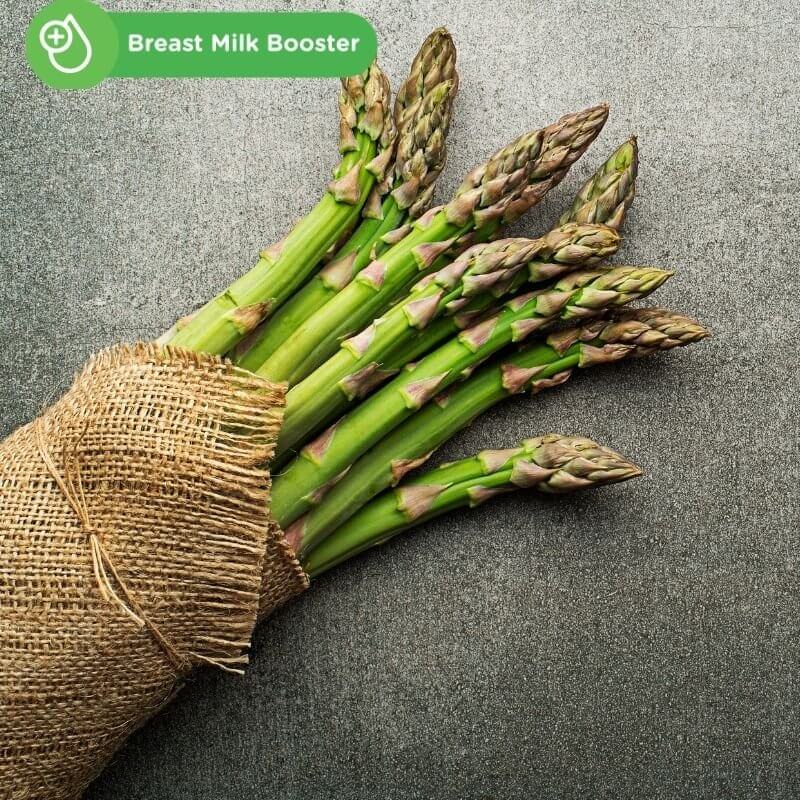
Breastfeeding mums can consume asparagus. Asparagus can help to boost your lactation. This vegetable is rich in vitamin A, K, and fibre. All of these can help promote your hormones to produce more milk. It is also high in calcium, zinc, magnesium, and vitamin B2, all of which are great for your overall health. Additionally, asparagus is also low in calories and sodium.Papaya
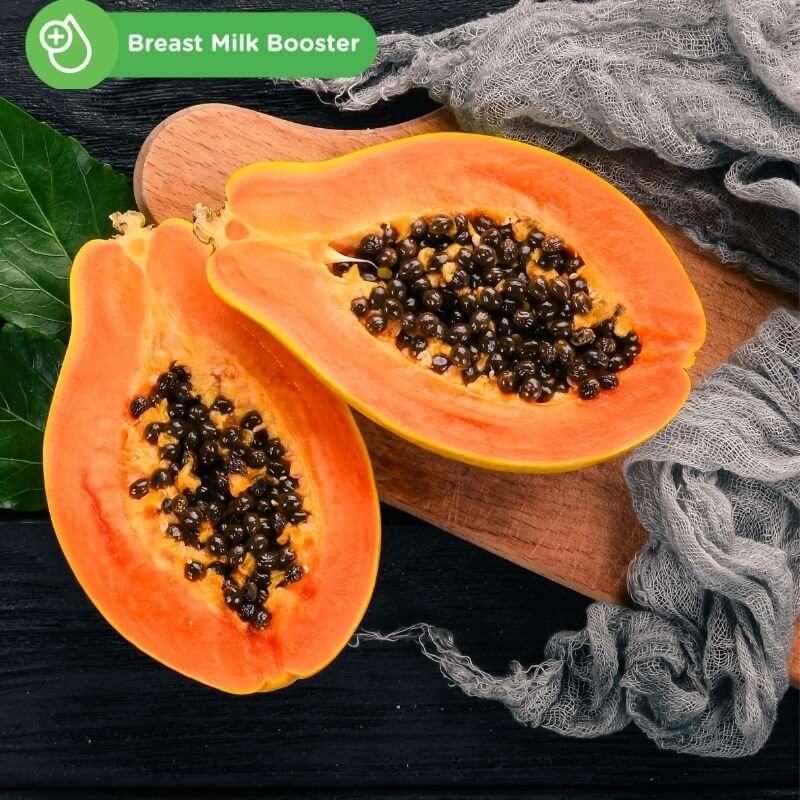
Papaya is a great milk booster too. It is also great for your skin, hair, and heart.Salmon
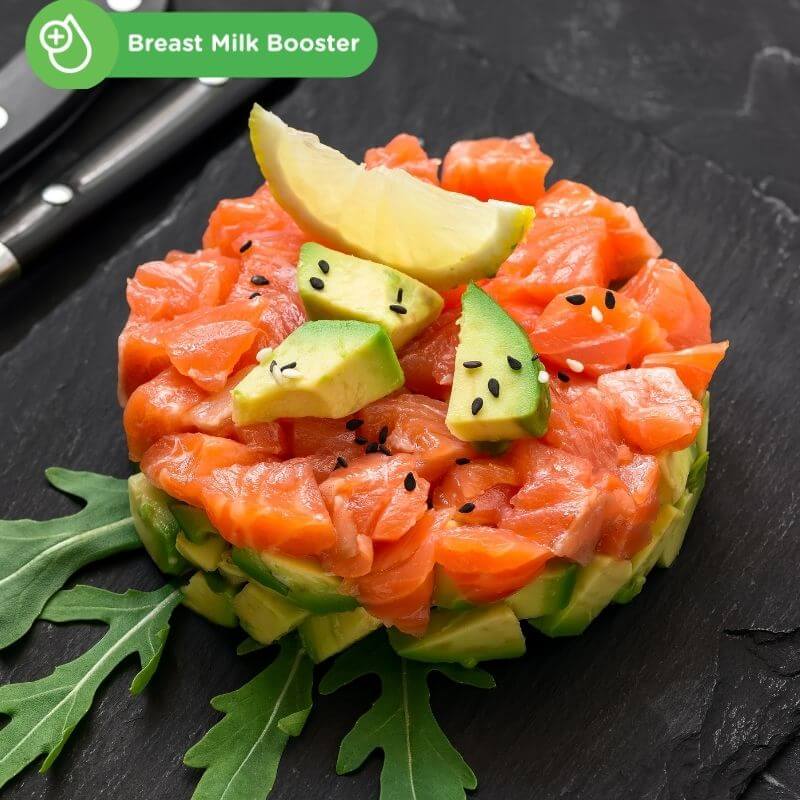
Salmons are great for breastfeeding mummies. They are rich in DHA which can help to develop your baby’s nervous system. In addition, they can also protect you from brain and heart diseases. Salmon can also boost your immunity and delay aging. You can try to grill or pan-fry them!Sweet potato
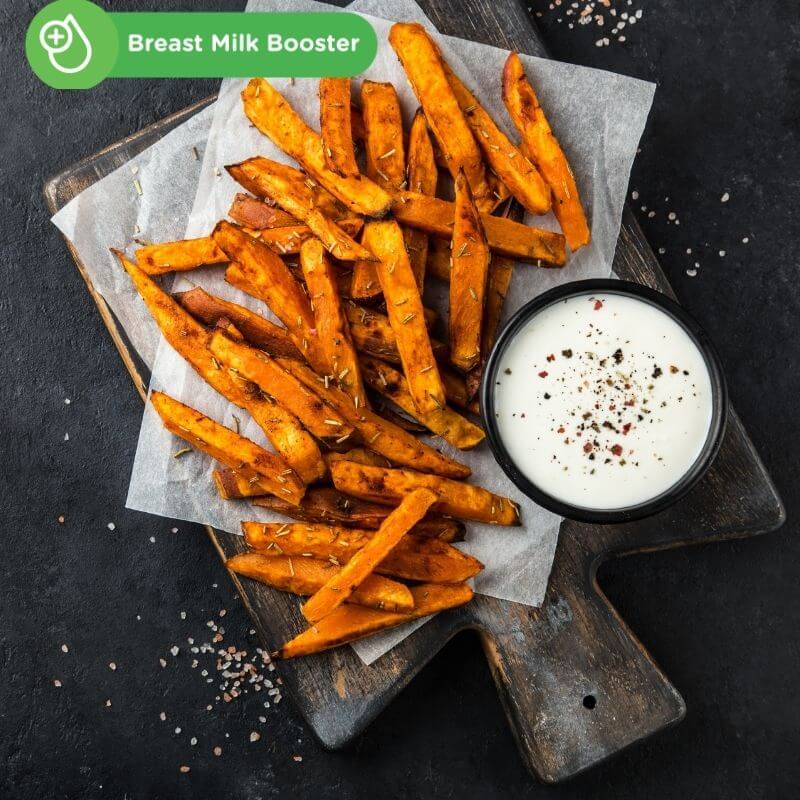
Nursing mums can eat sweet potatoes too. They are high in carbohydrates which can help you to boost your energy. Sweet potatoes are high in vitamin B, C, and magnesium, all of which are great for your overall health. The vitamin A in sweet potatoes is also great for your newborn’s immunity and vision.Tofu
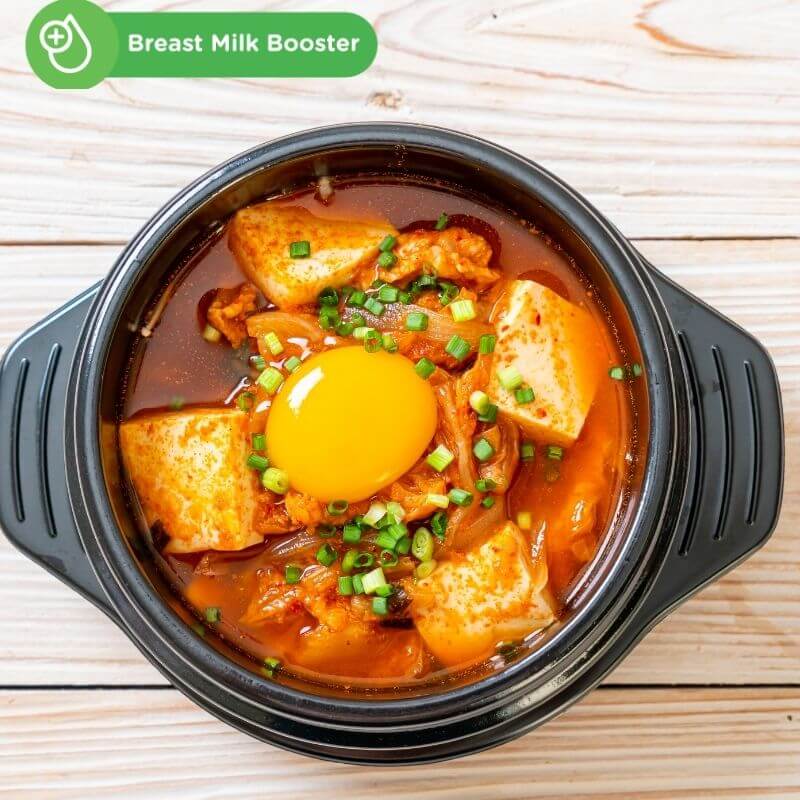
Tofu can enhance your milk supply too. It is rich in vitamins, protein, minerals, and calcium.Water

Nursing mums must drink a lot of water! You need to drink about 10 glasses of water daily as you provide around 700-850 ml of breast milk per day. So it is very important to drink it to stay hydrated! You can try drinking one glass of water at intervals, rather than consuming them in huge amounts at a time.Watermelon
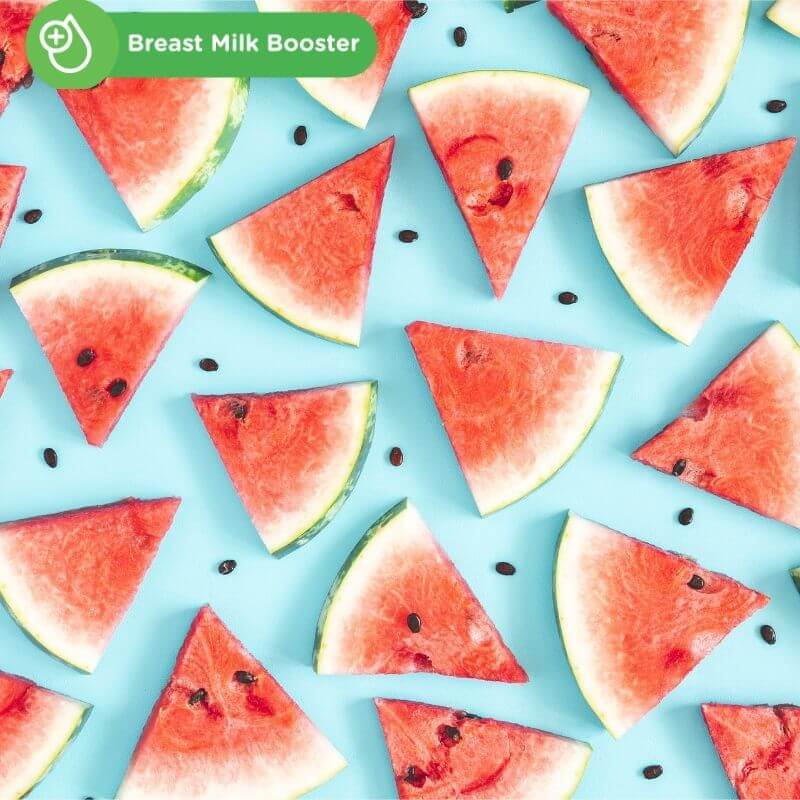
Watermelon is safe to eat during breastfeeding. It is rich in fibre and fructose. This fruit can help to boost your milk supply. It can also keep you hydrated as it has rich water content.Yoghurt
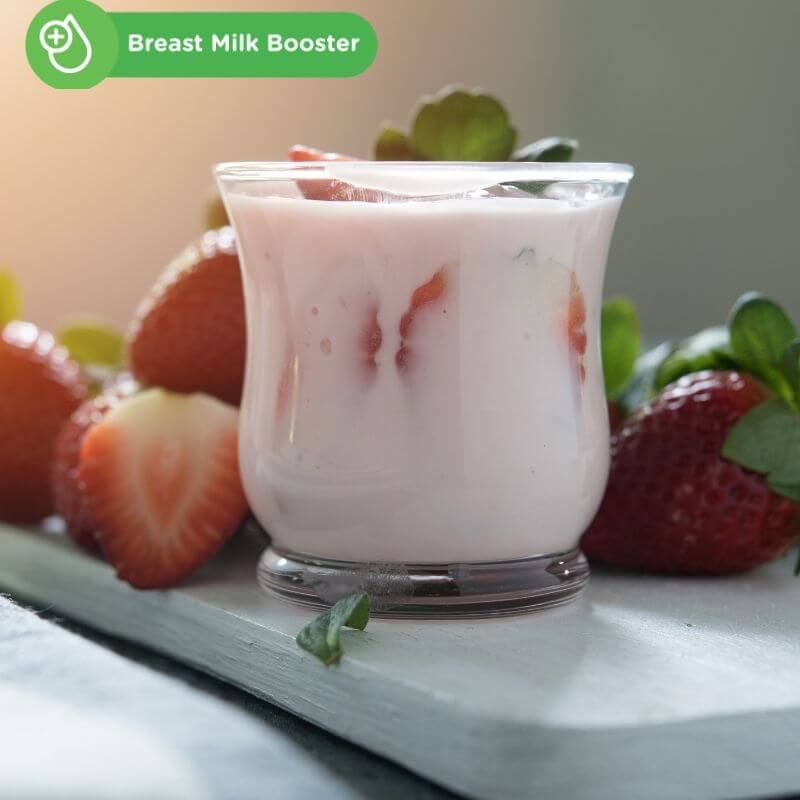
Nursing mums should consume yoghurt! Yoghurt is high in nutrients like vitamins, calcium, and good bacteria. Yoghurt can also improve your digestion and immunity. However, avoid eating it if you have gastric problems.Rice paper pith (Tong Cao)
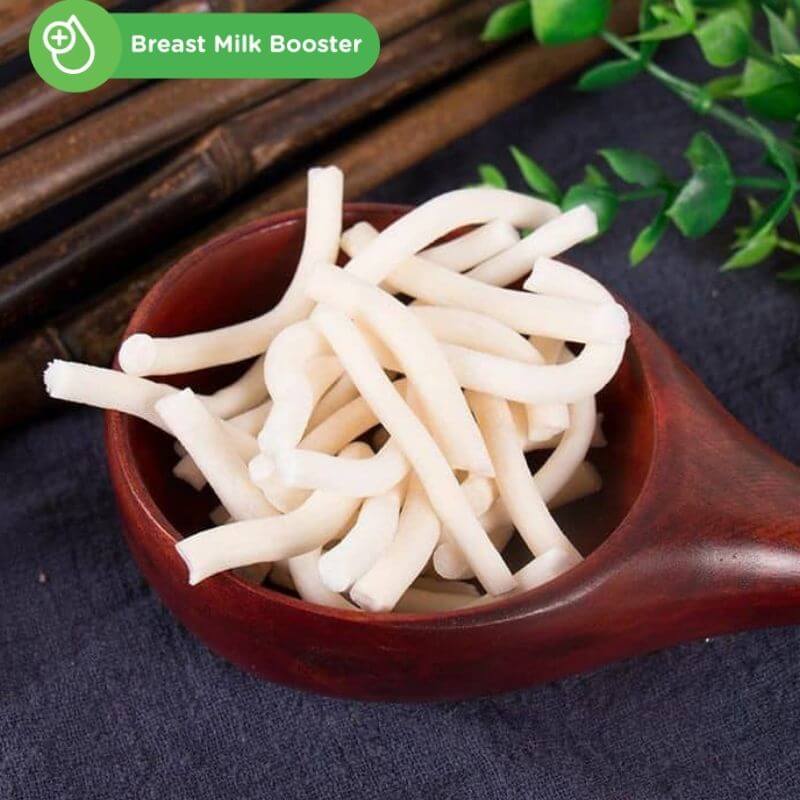
Nursing mums can consume rice paper pith. This herb is a great lactation-promoter for nursing mums. This herb has anti-thrombin, anti-hepatotoxic and anti-inflammatory properties. Additionally, this herb can help to prevent oedema and enhance urine output. This herb can also prevent common human diseases like infections and pneumonia.Red dates (Jujube)
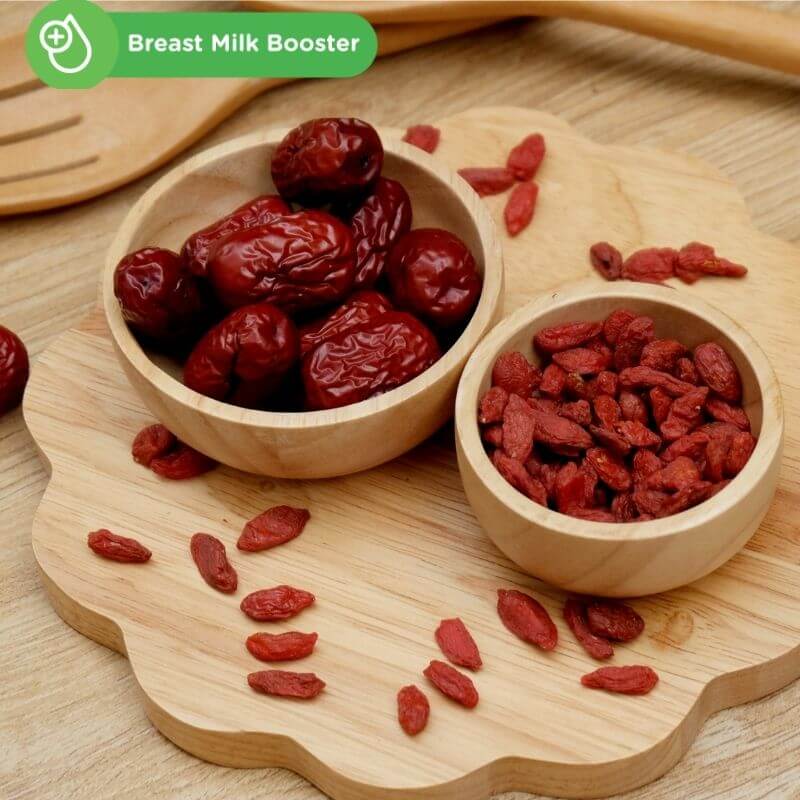
Red date is a great milk booster for breastfeeding mummies! They can help to replenish your energy after giving birth too! You can try to brew them into tea.Lotus root
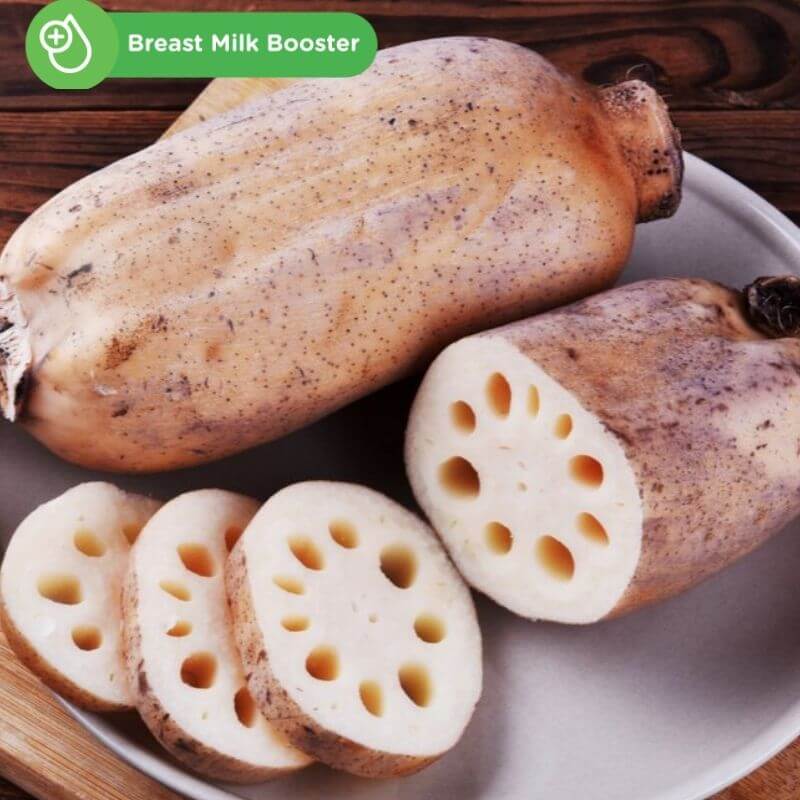
You can try to consume lotus root when you are nursing your newborn as this herb is a good milk booster. Lotus root can also supply beneficial nutrients to enhance your immune system.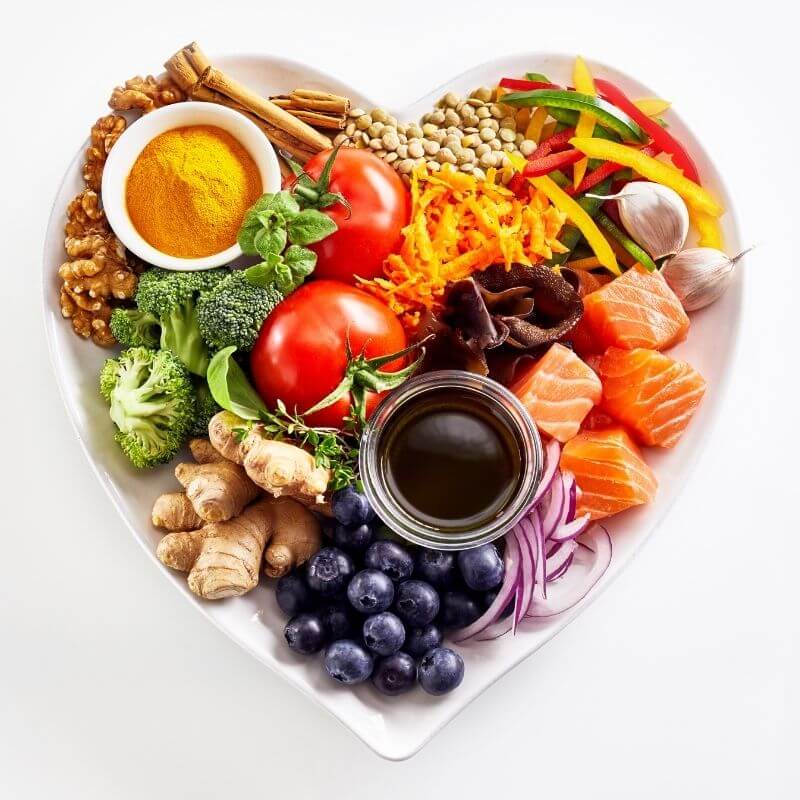
Consume these milk boosters for your baby's benefit!
Do try out these milk boosters as they are rich in many beneficial nutrients which are great for you and your newborn. Remember to always consume a healthy diet as it affects you and your baby.
Sources:- https://www.webmd.com/parenting/baby/nutrition-guide-new-moms
- https://www.webmd.com/parenting/baby/breast-feeding-diet
Check out which herbs you should consume after childbirth and which to avoid here.
For more insightful stories and healthy recipes, stay tuned to Motherhood Story! -
![img]()
Discussing Death With Your Child
Zakwan Shah
December 12, 2023
5 min
Religion tells us there’s life beyond the grave. Science tells us there is no existence beyond the physical.
Regardless of your beliefs, mortality is a very real and widespread phenomena that we all eventually learn to come to terms with.
What’s more, some may have to deal with it much sooner than they’d like.
Children have different concepts of death, depending on their age and level of intelligence. Some kids understand immediately what it means to die; others may need more explaining.
After all, how can someone just disappear and never come back? If there is a recent death in your family, chances are your kids will have some questions.
With the devastating surge in covid-19 deaths this past year, a close relative or acquaintance may have been a casualty.
Moreover, reports tell us that a large number of Covid-19 casualties are children.
So there may be a chance that a close friend of your child may have been an unfortunate victim. Here’s how to discuss death with your young children.Discussing Death with Young Children
Don’t Avoid Their Questions

The worst thing you can do when your child is asking about death is to dismiss their curiosity.
This is understandable, especially if there was a recent death in the family, and you’re still grieving.
You may be presented with a question that you yourself may have trouble answering.
While having a philosophical debate with a 5-year-old is not your idea of a productive afternoon, you must still try your best to accommodate them.
One of the more serious questions your child will ask if they themselves will one day die. Be truthful.
Tell them that everybody dies. During these discussions, you may start questioning your own relationshipwith death.
Adults deal with their own mortality in many profound and absurd ways; although many of us prefer not to think about it.
One important thing to remind your child of is that they should enjoy as much out of life as possible.
Most people take life for granted because they forget the fact that it can end at anytime.Be Proactive

Alternatively, don’t wait for a relative or a family pet to pass away before discussing the subject of death with your child.
If a close loved one has died, you may end up being occupied helping out at the funeral or comforting family members.
Find a time out of your schedule to talk to them about mortality on your own terms. If you find it difficult to broach such a sensitive and taboo topic, books might help.
Sit down and go through them with your child. It sounds a bit cruel, talking about a depressing topic with a happy child.
It can possibly ruin their day. But learning about death may actually end up being a positive experience for your child.
It may foster a greater sense of gratitude and maturity, of acceptance and love.
They may appreciate and cherish the small moments with loved ones more than they ever would otherwise.Avoid Traumatising Your Kids

Death is easy enough to explain to kids, but it gets a little tricky when they ask the hard questions.
One of these may include 'where do bad people go after they die?' This is usually where parents inevitably introduce their children to the concept of 'hell'.
Certain faiths like Christianity and Islam necessitate religious teachings for young children.
One of those topics include the afterlife. Know that your kids will eventually learn about death from their peers and teachers. Malay children, for instance, learn about the Islamic version of the hereafter as young as primary one.
Depending on the teacher, your kids may be exposed to some traumatising information.
The hell of the Abrahamic faiths is no walk in the park. It's full of fire and brimstone and gory punishments; guilty souls being subjected to horrendous tortures.
So decide early on if this is what you want your children to learn at the tender age of 6.Offer a Comforting Narrative

As previously mentioned, many religions offer some explanation of the hereafter.
Even Hindu and Buddhist reincarnation lore involves some mention of hell dimensions. Regardless, I urge you to postpone the 'hell talk until your kids are a little older.
Instead, when a close loved one dies, keep the narrative light and positive.
You don’t necessarily have to mention heaven, although for religious families, this is the common narrative.
Other parents will simply tell their child that the deceased has gone on to a 'better place'.
Regardless of what story you wish to tell, try to make it a good one. I’m sure many kids who learn about hell too soon stay up late at night in fear of committing sins and being sent 'down there'.
To make matters worse, many parents are guilty of misusing the subject of death to their advantage.
Threatening your kids when they misbehave with hell is a form of religious abuse.
So please think twice before using your faith as a form of childhood discipline. There are better ways to discipline your child.Explain What Death is To The Best of Your Ability

Death is actually a much more complex subject than you think. It’s not just someone passing away and being buried.
The circumstances surrounding a death, the process of dying, the causes as well as the aftermath are all important.
But your child doesn't need to know all this. Simplify the concept of death to them.
The easiest way to explain dying is that it's like going to sleep and never waking up. You can of course mention the concept of souls, or consciousness, depending on your beliefs.
Although, much like the subject of the hereafter, souls open up another can of worms you may not be prepared to deal with.
Theological concepts like God, sin, judgement day, angels and demons, etcetera often arise when discussing death.
Some kids react to death pretty well, while others may develop a neurosis or complex because of what you tell them.
So keep the details brief without withholding any pertinent information. For a young child still trying to understand mortality, the first thing they need to know is that it’s natural.
Everything dies; plants, animals, humans. Without death, life cannot exist.
Remind them also that death does not discriminate between age, race, gender or lifestyle.
A healthy person can still die at 25 from an accident, and a chronic smoker can live well into their 50s.
Lessons in death can also be a teachable moment for your kids to learn the importance of healthy habits.
We don't know what the future may hold, but at the very least we can reduce our chances of dying from illnesses.Lessons in Mortality

Death is a natural part of life, but as humans, we fear the unknown. Religion offers us comfort, even as science disputes the existence of the hereafter.
Your children will eventually grow up and form their own beliefs and expectations about their own mortality.
The best thing you can do as a parent, as with all things, is to give them a soft place to land.
Your children did not ask to be born or to experience the terrors of this mortal life. So what you need to do is ease them into it, until they find their sea-legs.
Death will forever be a fascination to humans, as it is in our nature to understand the unknown.
One thing to note though is that some of us may continue to harbour questions about mortality well into adulthood.
Death will come for us all whether we want it to or not, so there really is no point worrying about it. In the words of JK Rowling, author of the Harry Potter books, 'to the well-organised mind, death is but the next great adventure.'
Disclaimer: The information provided in this article is for informational purposes only and should not be considered as medical advice from Motherhood. For any health-related concerns, it is advisable to consult with a qualified healthcare professional or medical practitioner.
For more insightful stories and fun recipes, stay tuned to Motherhood Story!
Navigation
Our menu boxes are very flexible and easy to use




